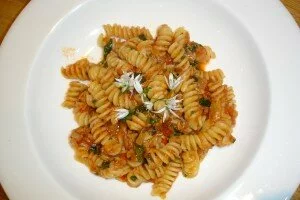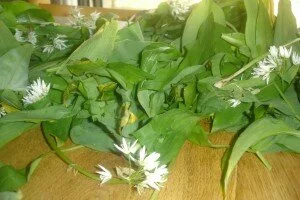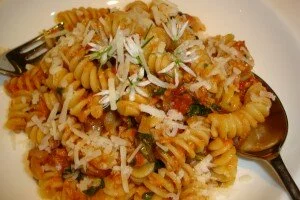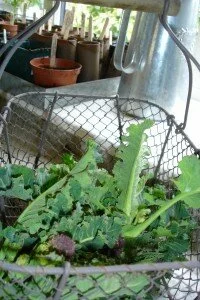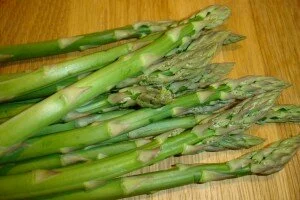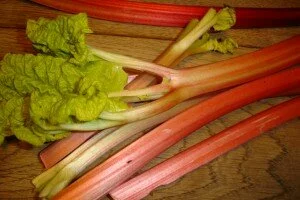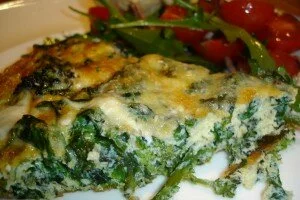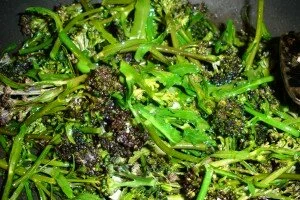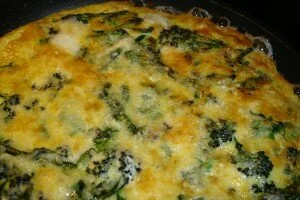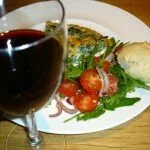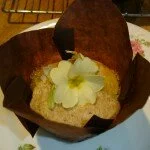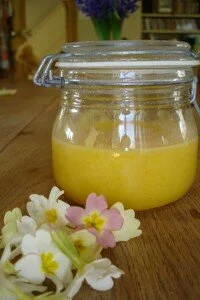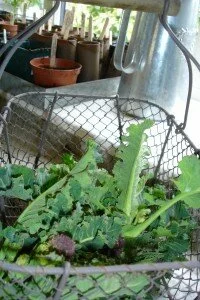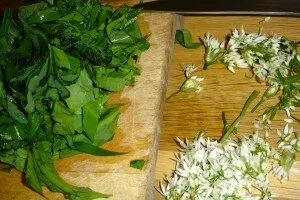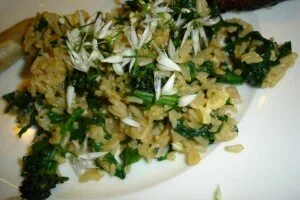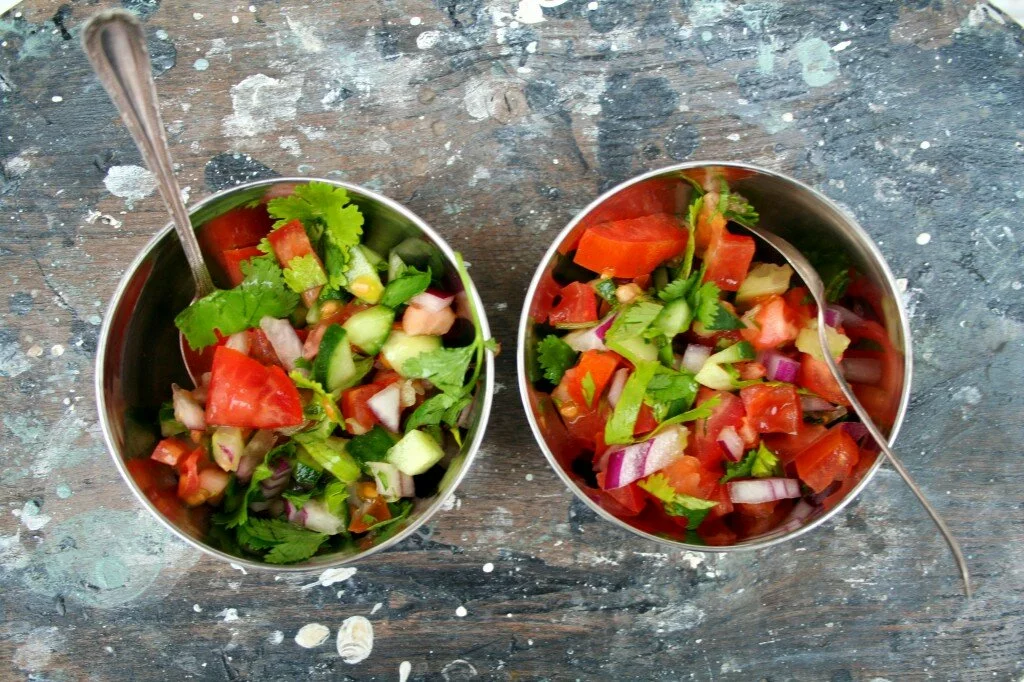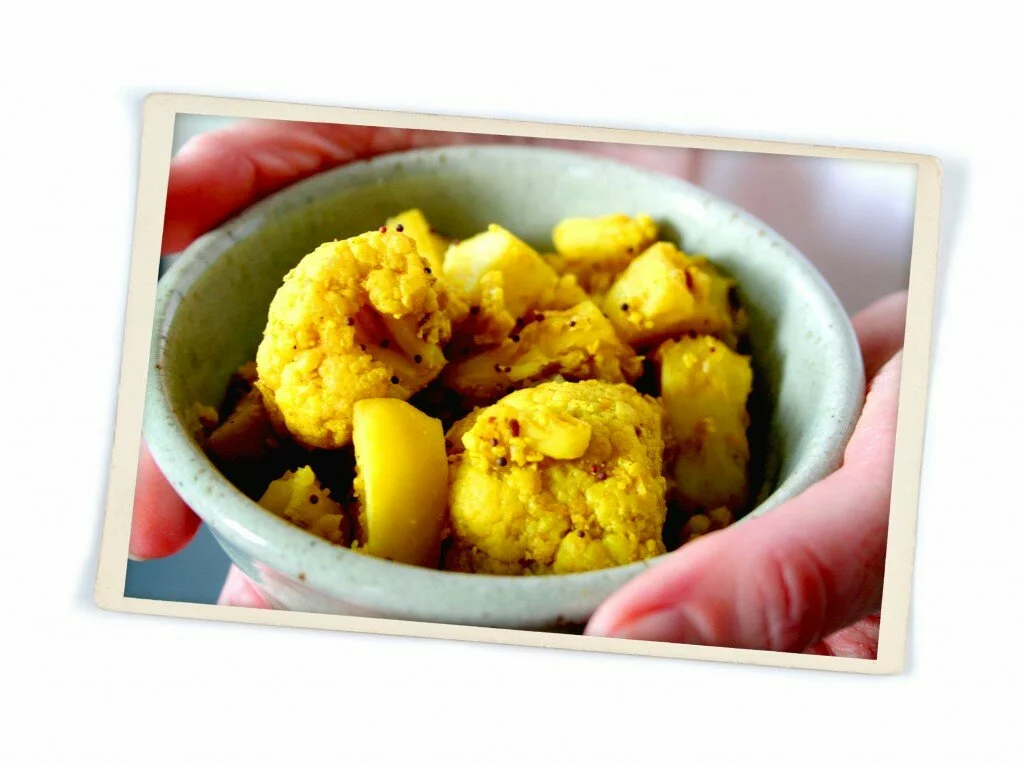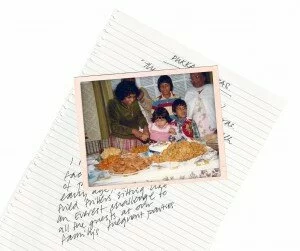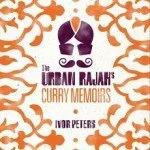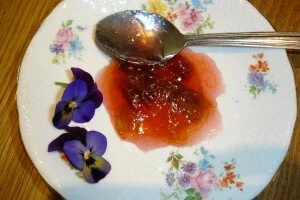
At the beginning of May, I definitely wouldn’t have considered making jam. All that sunshine made me want to spend any spare moments outside. Planting fruit, not cooking it in the kitchen.
Now everything is so lush, the rhubarb is really flourishing and I can see sweet cicely with its pretty cream flowers from the kitchen table.
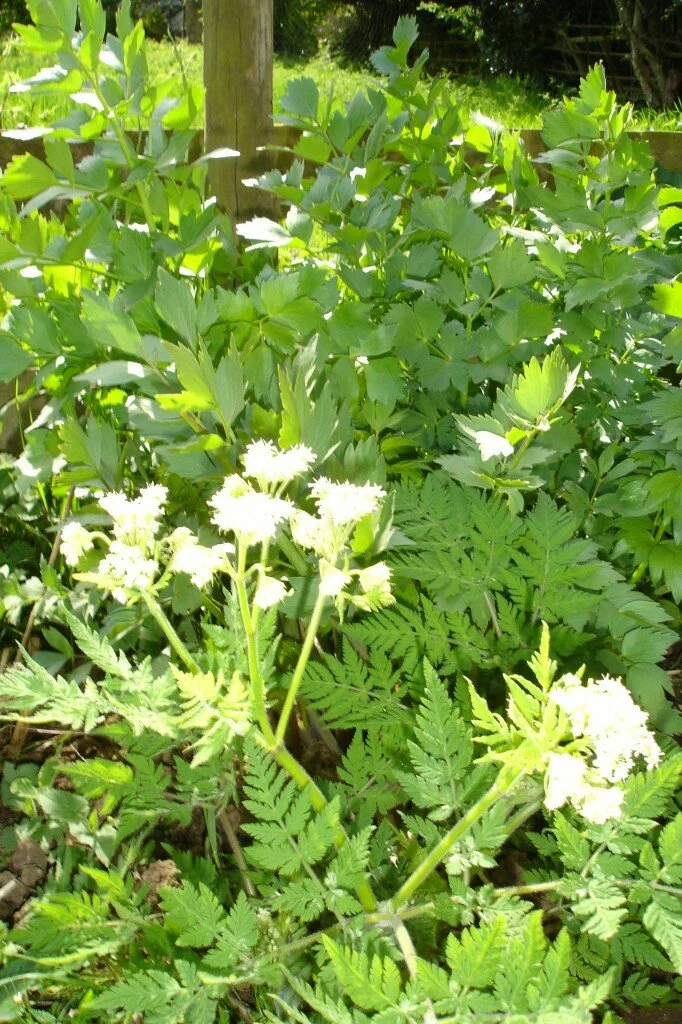
But it’s very cold and rainy. So instead of dusk gardening, evening jam making beckons.
Popping out to the garden to gather fruit and herbs, an abundance of mud and cooking are a dangerous combination I find. Once I’m outside there are always a few bits and pieces that I notice need attention and I’m easily distracted. But I’d planned to cook and hadn’t exactly dressed for gardening.
One evening there was a cold-frame avalanche. Shoddy placing of the top shelf (by me of course) meant that it suddenly collapsed. Of course it was crammed full of pots of seedlings, which all landed on top of the poor courgettes and Mother Hubbard squash plants sitting below. I’d only popped out for a minute of watering the pots inside. An hour later, I arrived back in the kitchen, having re-potted as many undamaged plants as possible. Thankfully there weren’t too many plant casualties, just very muddy arms for me.
Looking back at pictures of Ruby gardening, I think she may take after her Mum in her insistence that there’s no need to change, one outfit suits everything:

This was taken after a Jubilee street party last year (you may spot the face-painting) – we’d returned home and were checking the potatoes! Ruby’s pretty dress soon became very muddy. I don’t exactly have an extensive wardrobe but I do like to wear and enjoy my favourite clothes too. Skirts and dresses are happily intermingled with my scruffy jeans. Often worn with these of course:

So after my very lovely girly excursion to the village hall vintage tea party, I may have been tempted to browse these (totally out of my price range!) Brora Liberty Print and tea dresses. But even if I had cash to spare, I know I’d end up cooking in them, pop out to pick a few herbs and water the cold frame a little before turning the compost heap.
Perhaps these great Howies organic t-shirts (I love the fact that they’re called ‘Go Wild’ and in violet) may be more practical. And I’ll have a feminine fix from these very pink drinks and preserves.
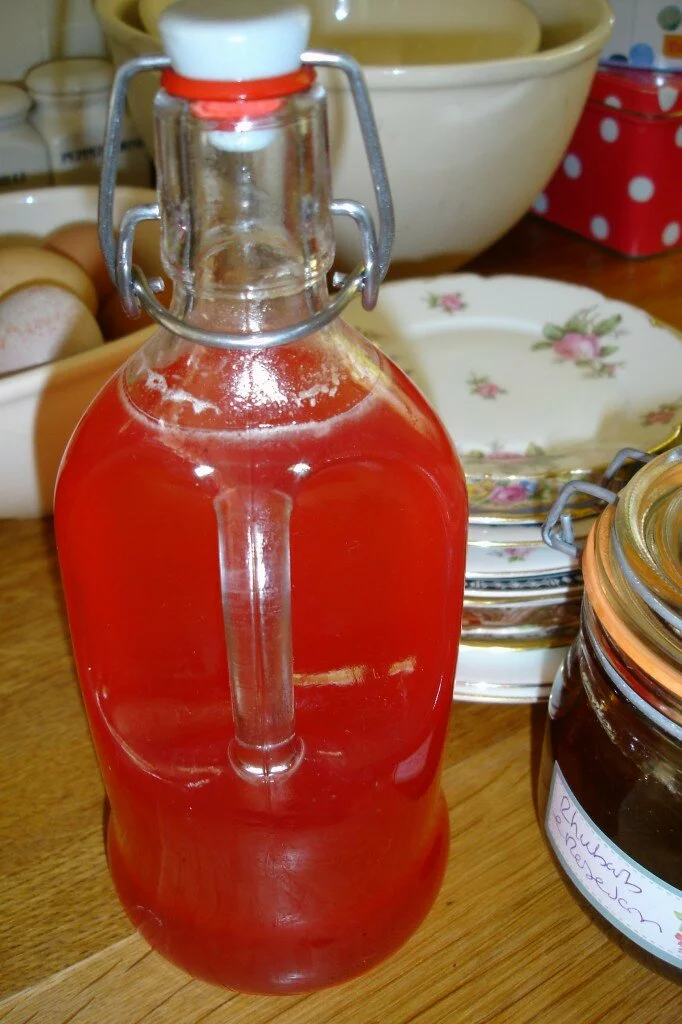
The gloriously pink bottles are rhubarb cordial, made from the Jamie Oliver recipe here. It’s a very refreshing (and pretty!) drink diluted with sparkling water or just tap water. And I think it’ll make a fabulously summery drink added to Prosecco once we have warm evenings again.
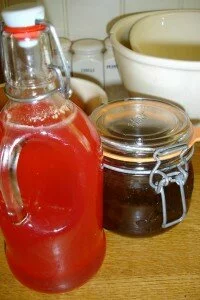
The rhubarb and rose jam (I know, at last I’ve got to the point!) is adapted from Diana Henry’s Salt, Sugar, Smoke. Rhubarb, rose and cardamom jam is one of the many jewel-coloured inspiring preserve recipes in this very lovely book. I will make the original recipe too very soon. But much as I love cardamom, I thought Ruby (who I’m hoping will like this fragrant pink jam with stove-top rice pudding and porridge) would prefer a version without. And besides, this is the first year I’ve had Sweet Cicely thriving in the garden. I’ve read so much about how brilliant it is paired with rhubarb and wanted to try a rhubarb/sweet cicely combination.
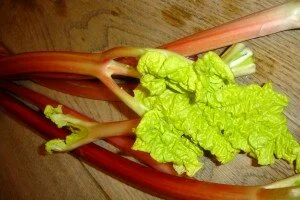
I made this jam twice – first, using jam sugar with added pectin as in Diana Henry’s version. This produced a jam that set easily, but I wanted a runnier jam, so tried it made just with granulated sugar. I prefer this version, and will even try it again with less sugar – especially as Sweet Cicely is well known as a herb which reduces the acidity of tart fruit. It wouldn’t last as long and would need to be kept in the fridge, but as I have so many uses in mind, including scones, Victoria Sandwich cakes with mascarpone and just spread on good toasted sourdough, I don’t think that will be a problem.
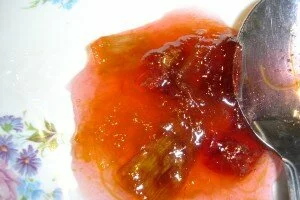
Rhubarb and rose jam with sweet cicely
1 kg rhubarb (untrimmed weight)
900g granulated sugar
juice of 1 lemon
a few sweet cicely leaves
100ml apple juice
1 dessert spoon rose water
Trim and wash the rhubarb, cutting into short lengths. Toss with the sugar in a preserving pan and pour over the lemon juice and apple juice. Cover and leave overnight, or at least for a few hours to draw out the juices from the rhubarb.
Add the sweet cicely to the rhubarb. Slowly bring the contents of the pan to the boil so that the sugar dissolves, then boil rapidly until you reach setting point. I found this only took a few minutes, but then I’m prepared to have runny jam dribbling over the sides of my scones.
Remove from the heat, remove the sweet cicely and add the rose water. Return to heat and bring to boil again quickly. Remove from heat, tasting and adding a little more lemon juice or rose water (although remember you’re after a lovely fragrant jam, not creating perfume) to taste. Put in warm, sterilized jars and seal.
If it lasts that long, it’ll be lovely when the roses are blooming to decorate little bowls of rice pud or cakes that include this preserve, with petals. In the meantime, I’ll make do with violets.
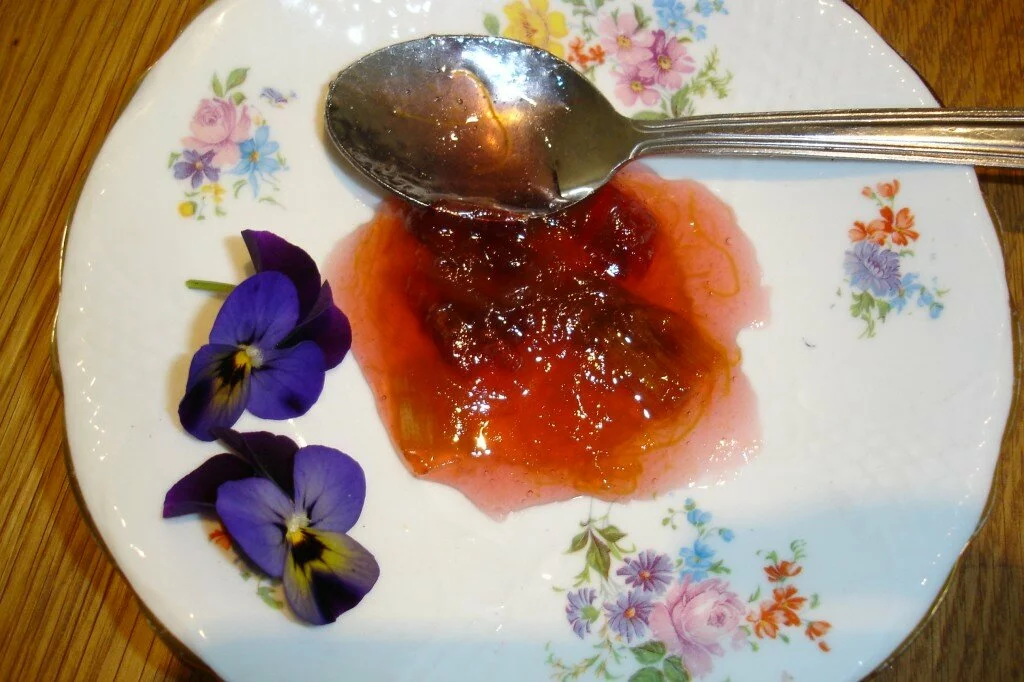
This is a sponsored post, but as usual all rambling opinions are my own.
